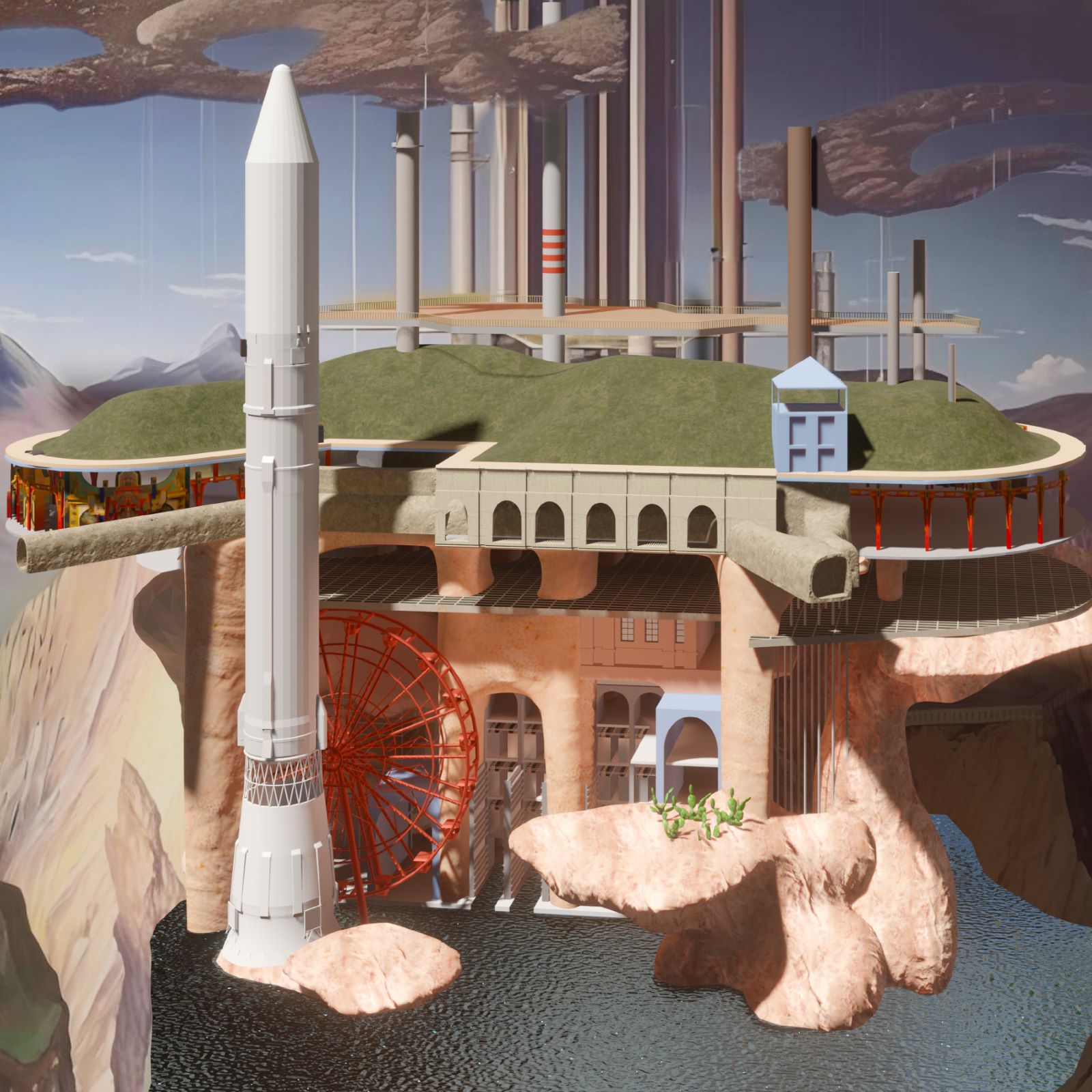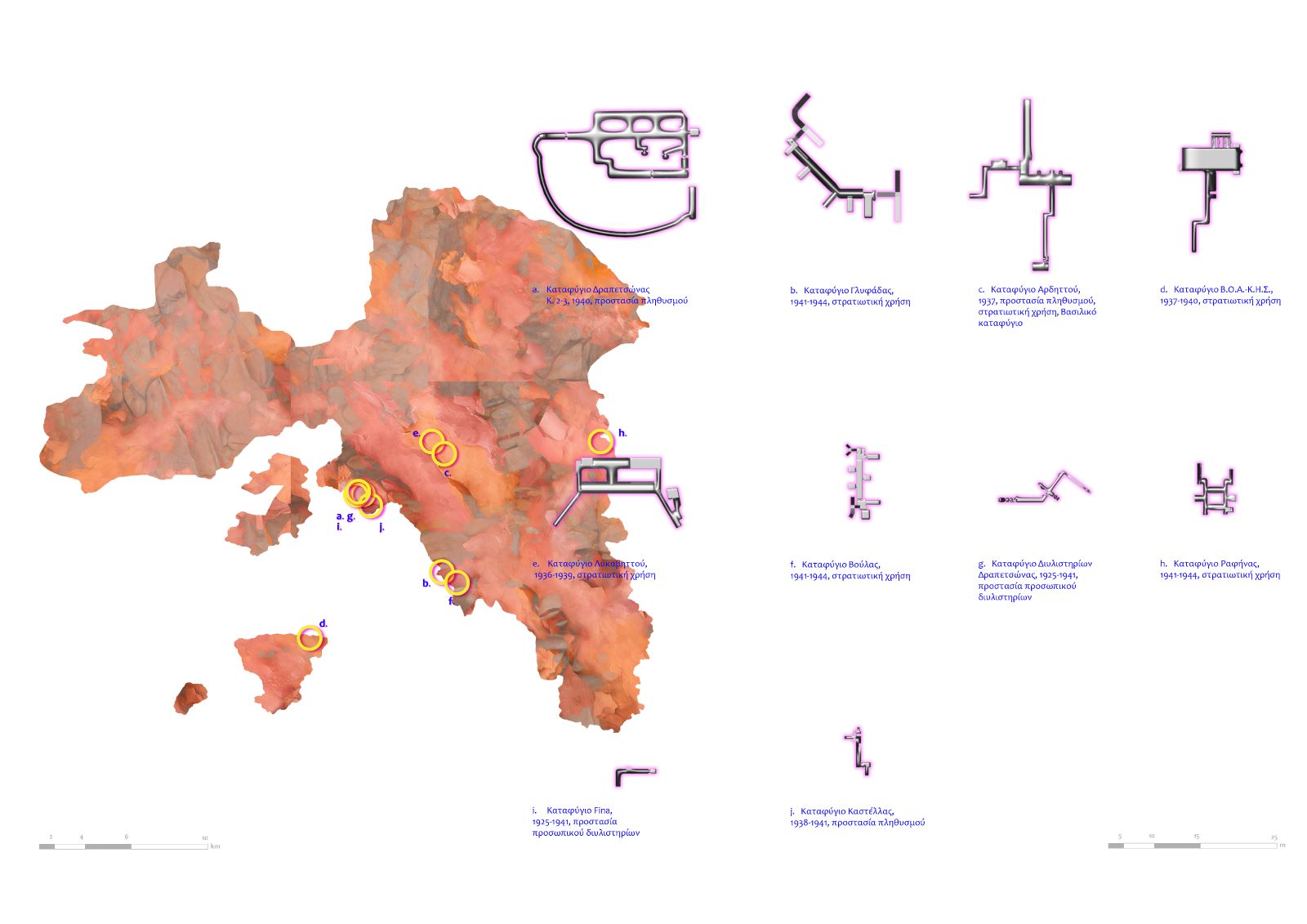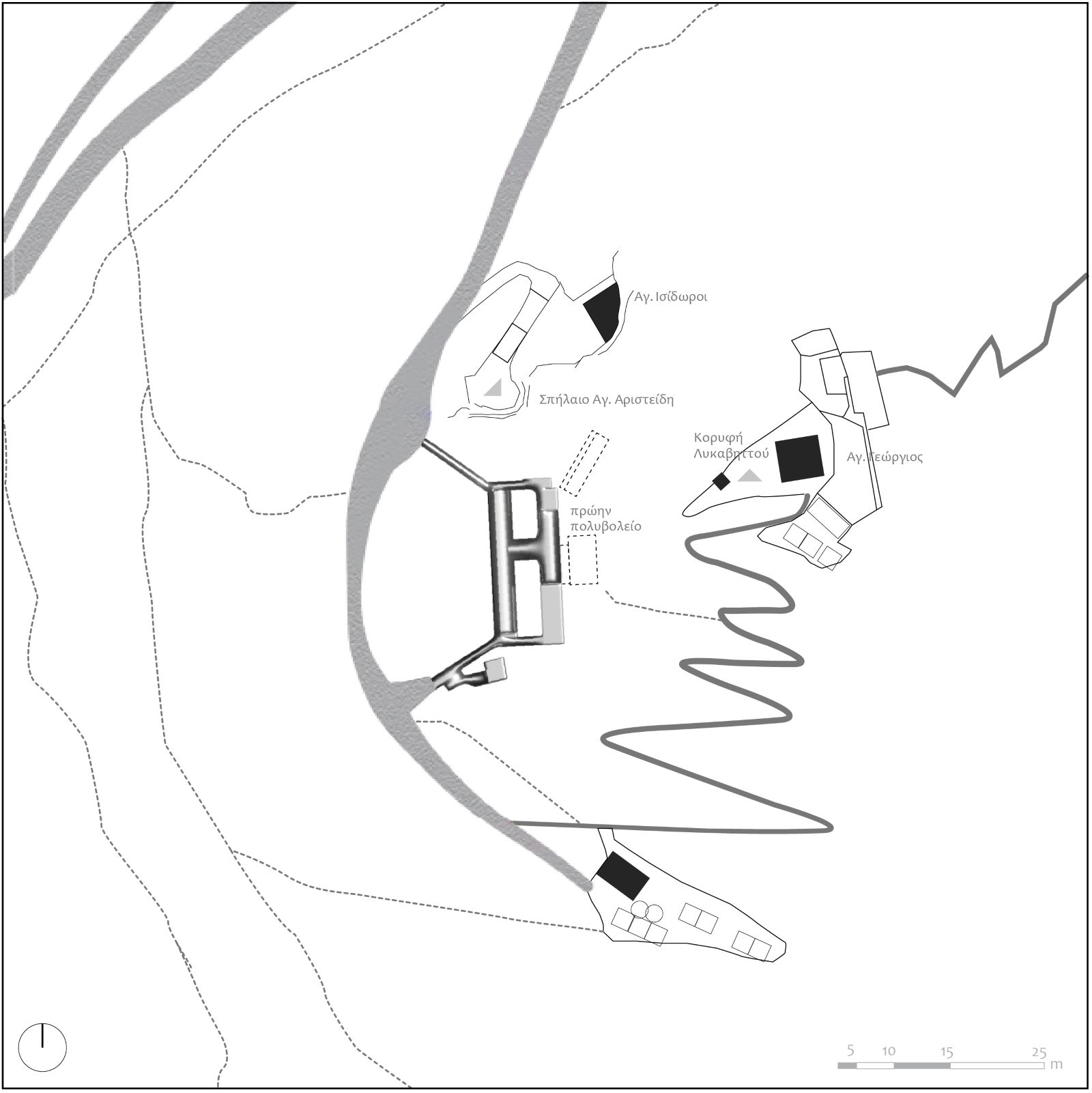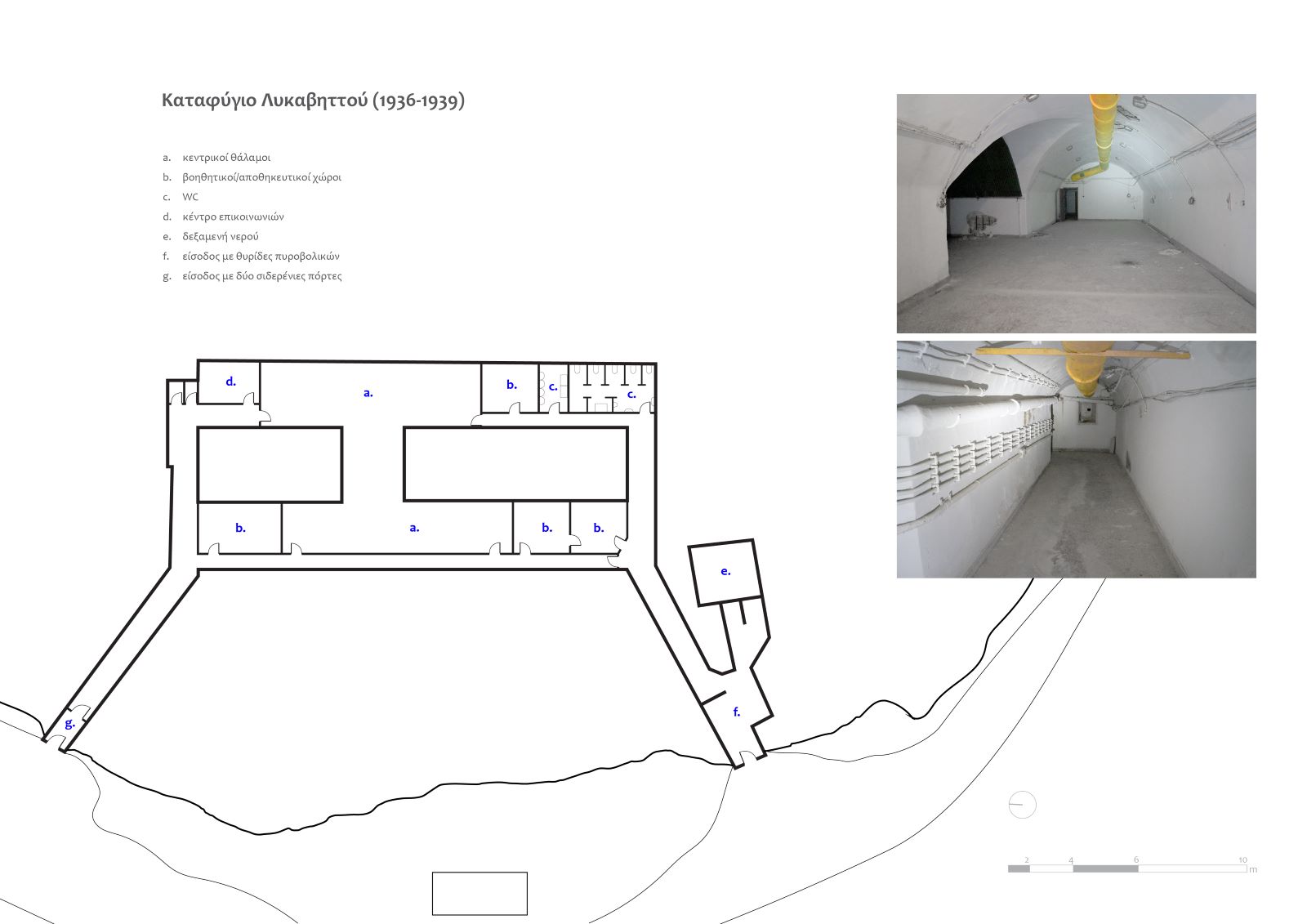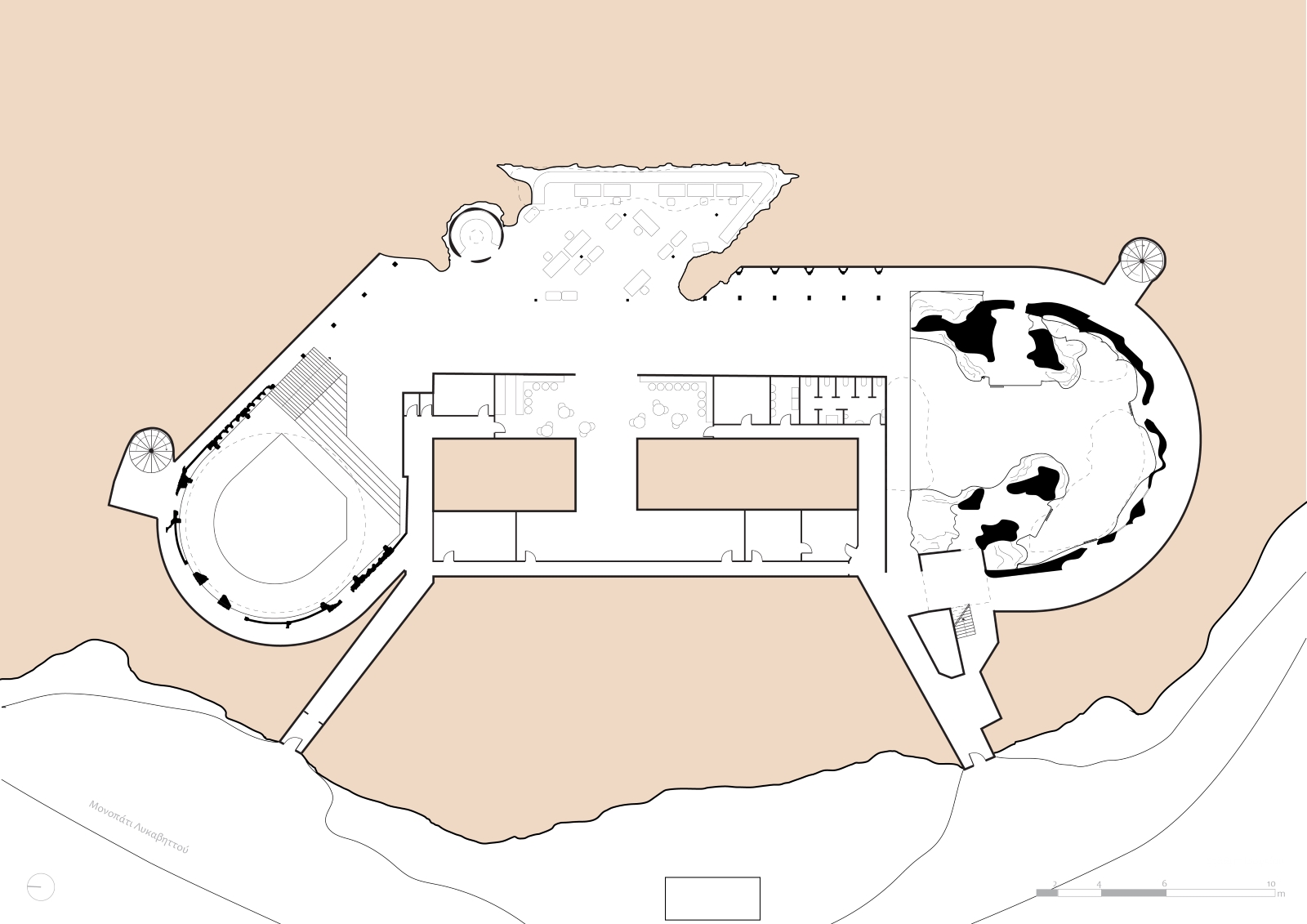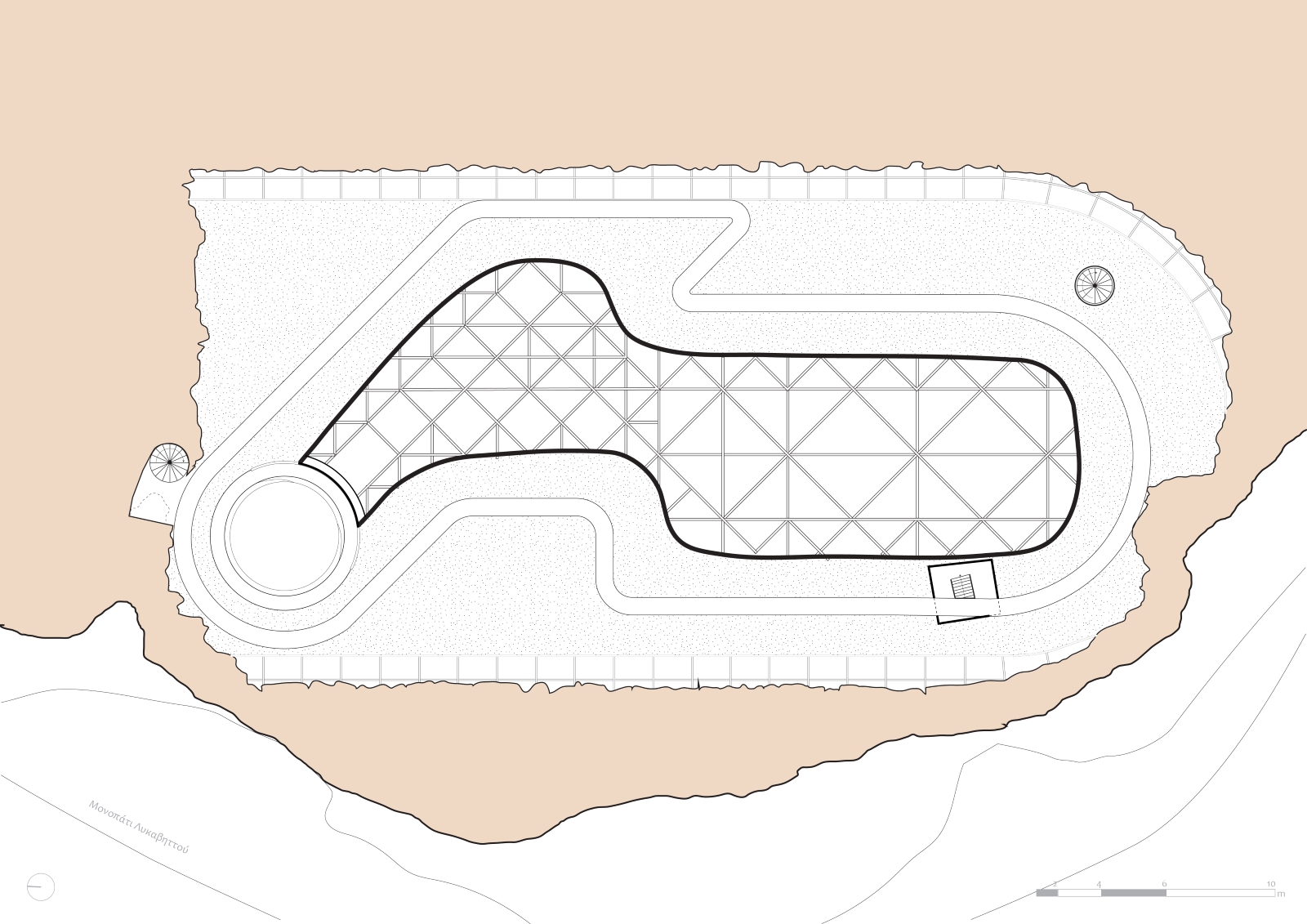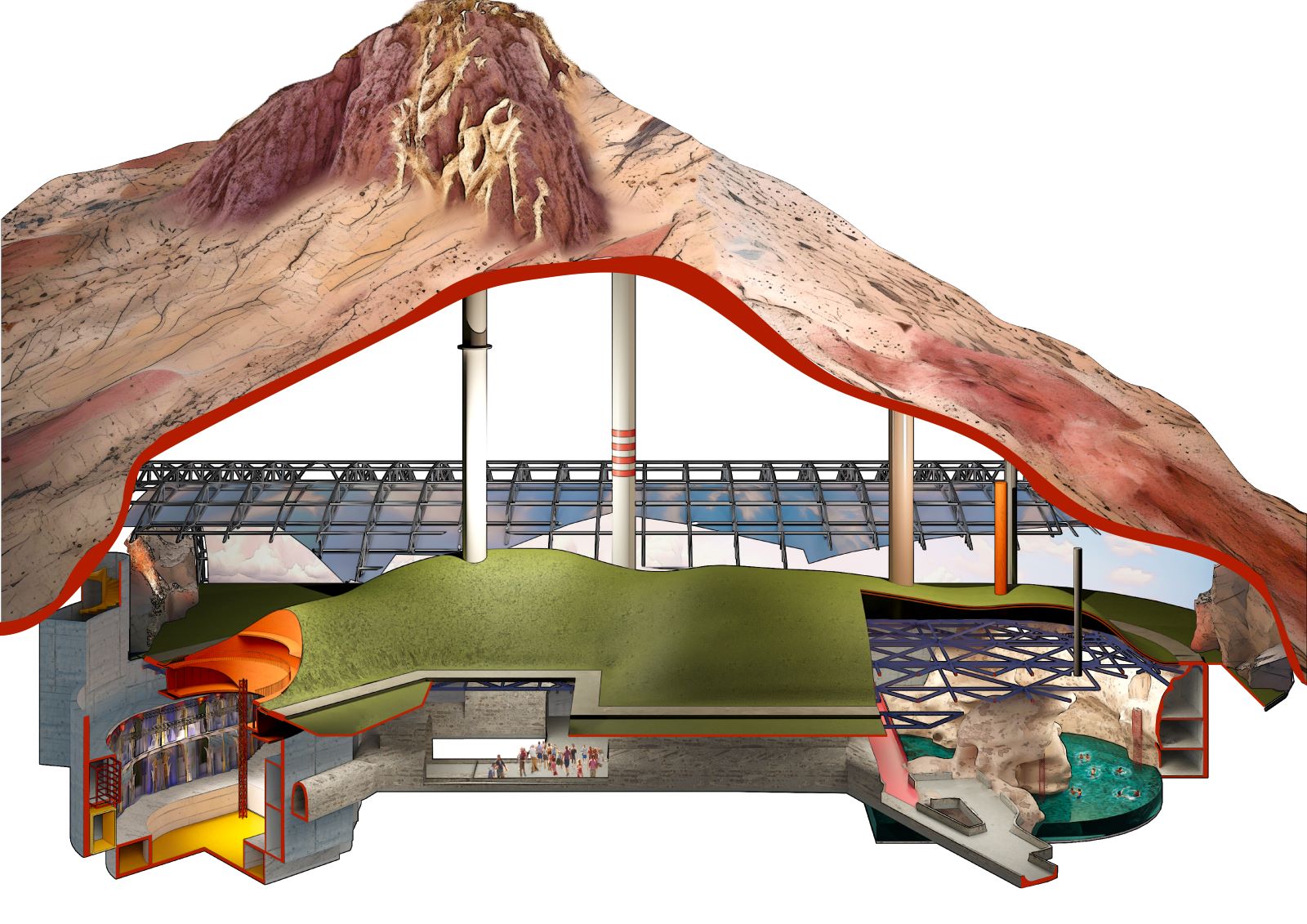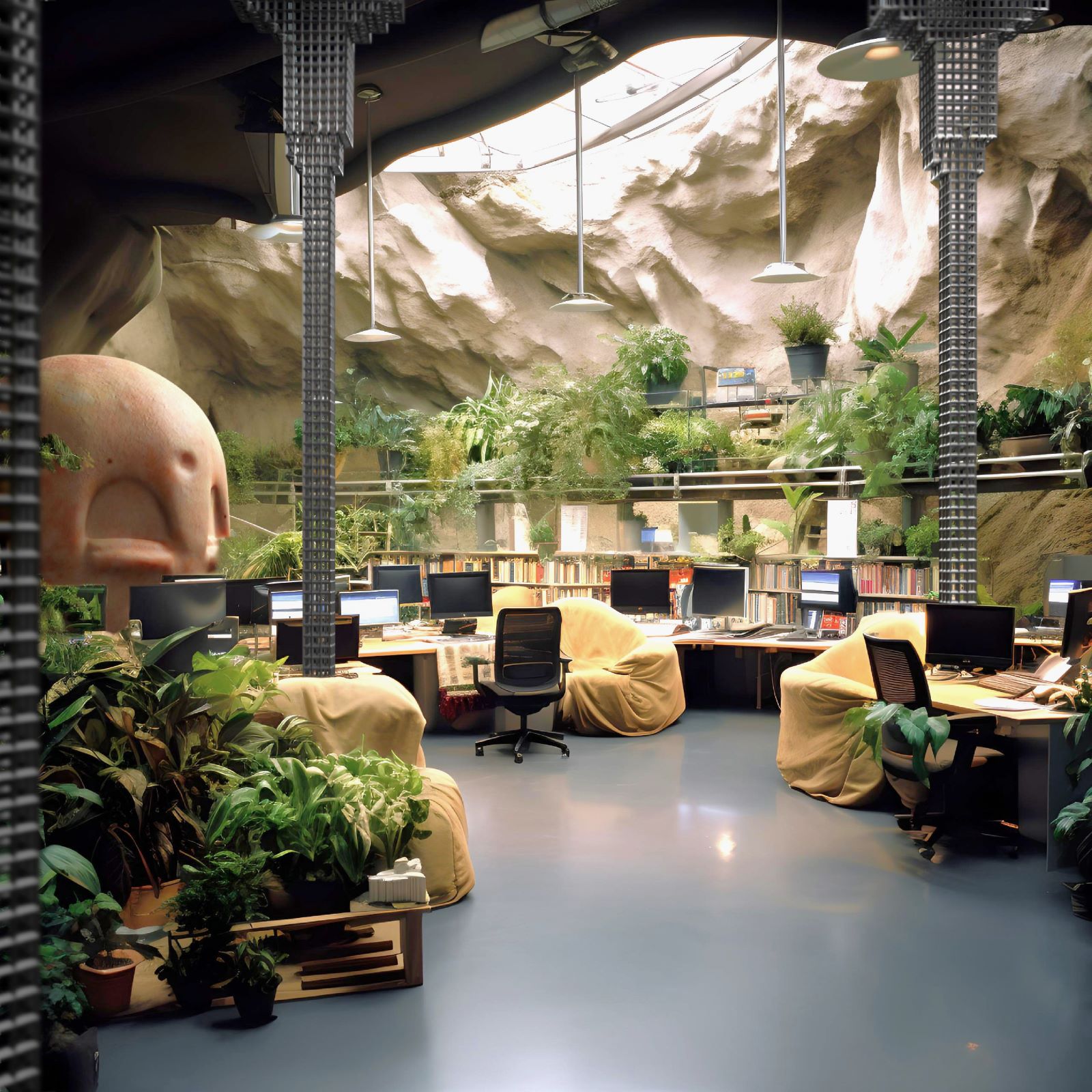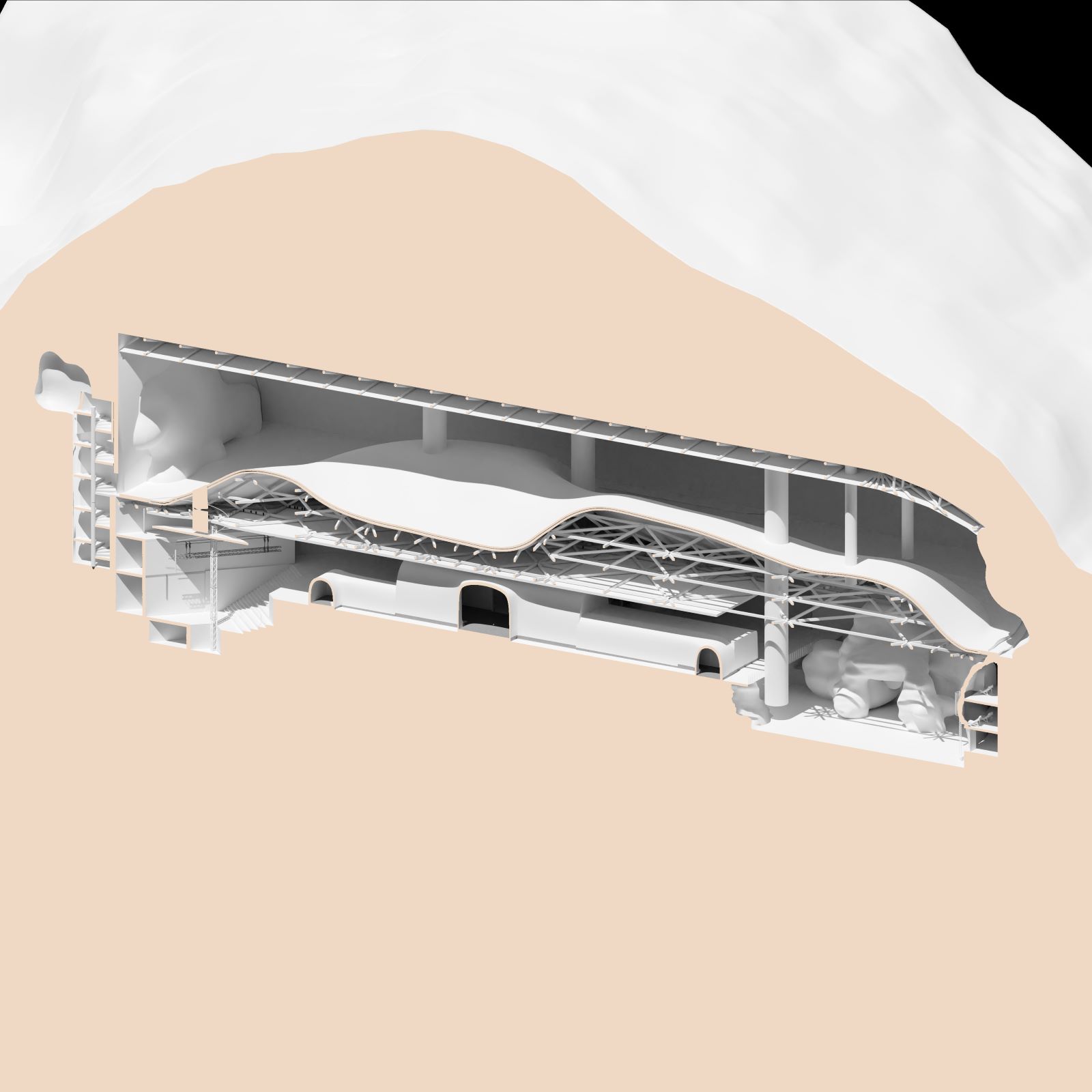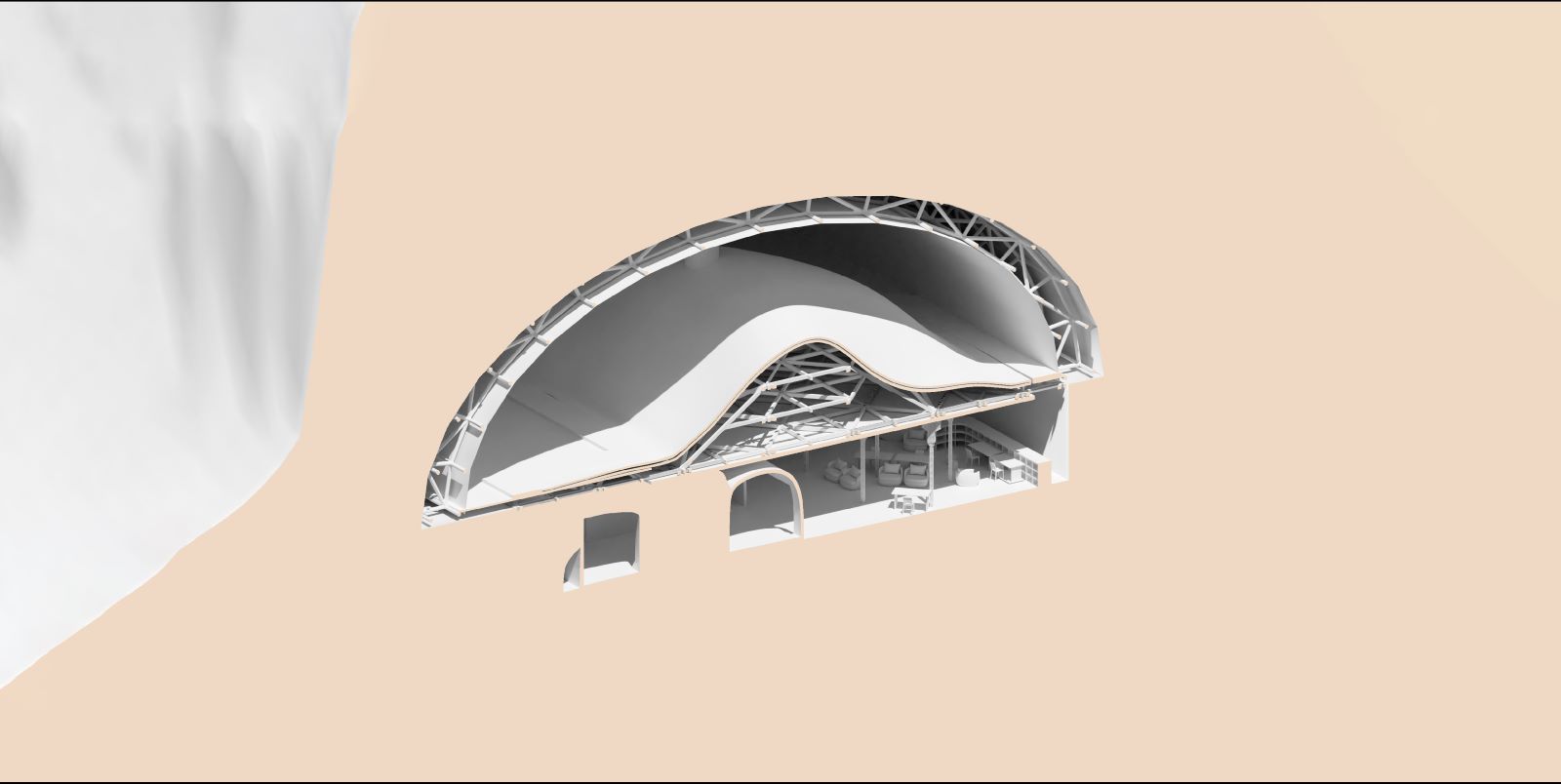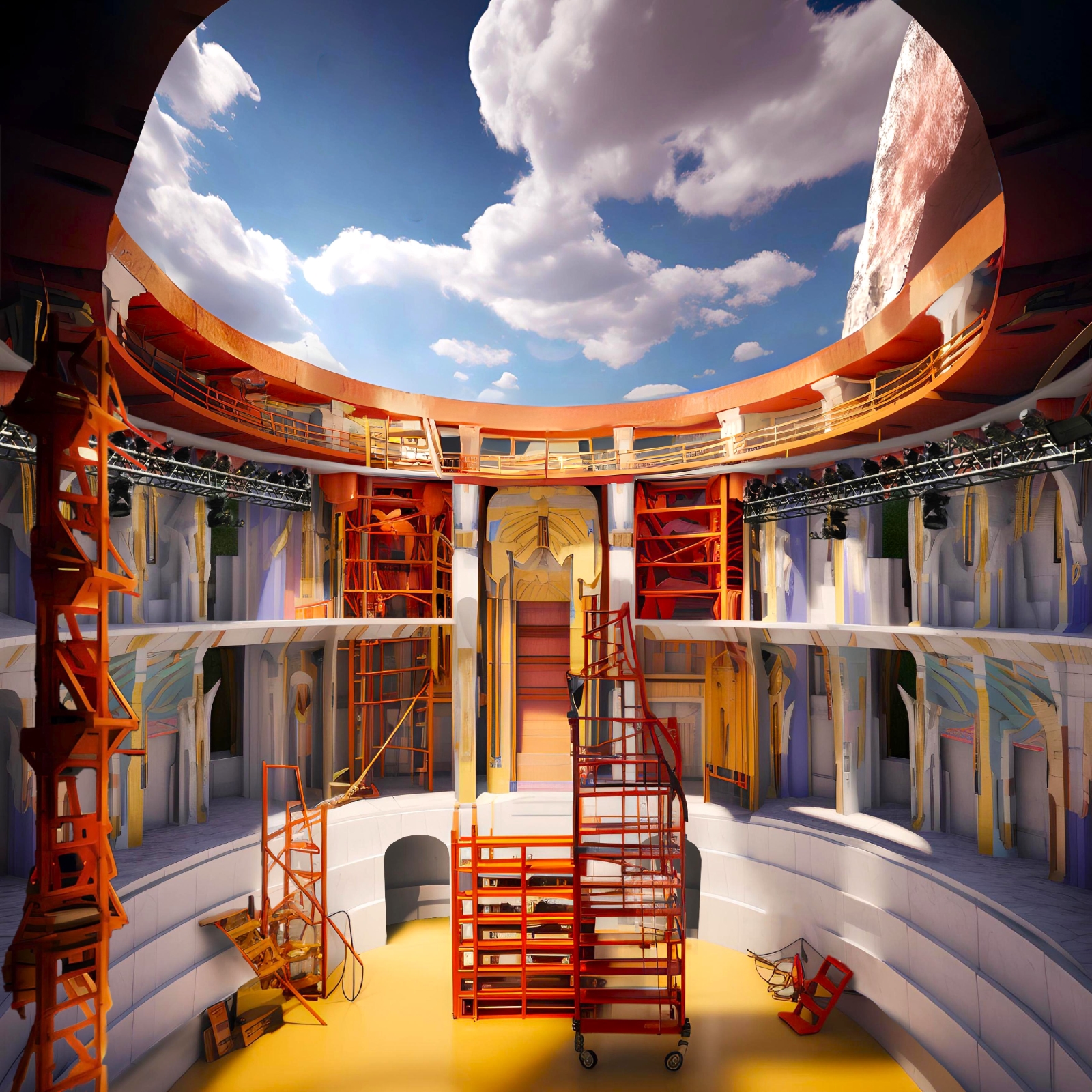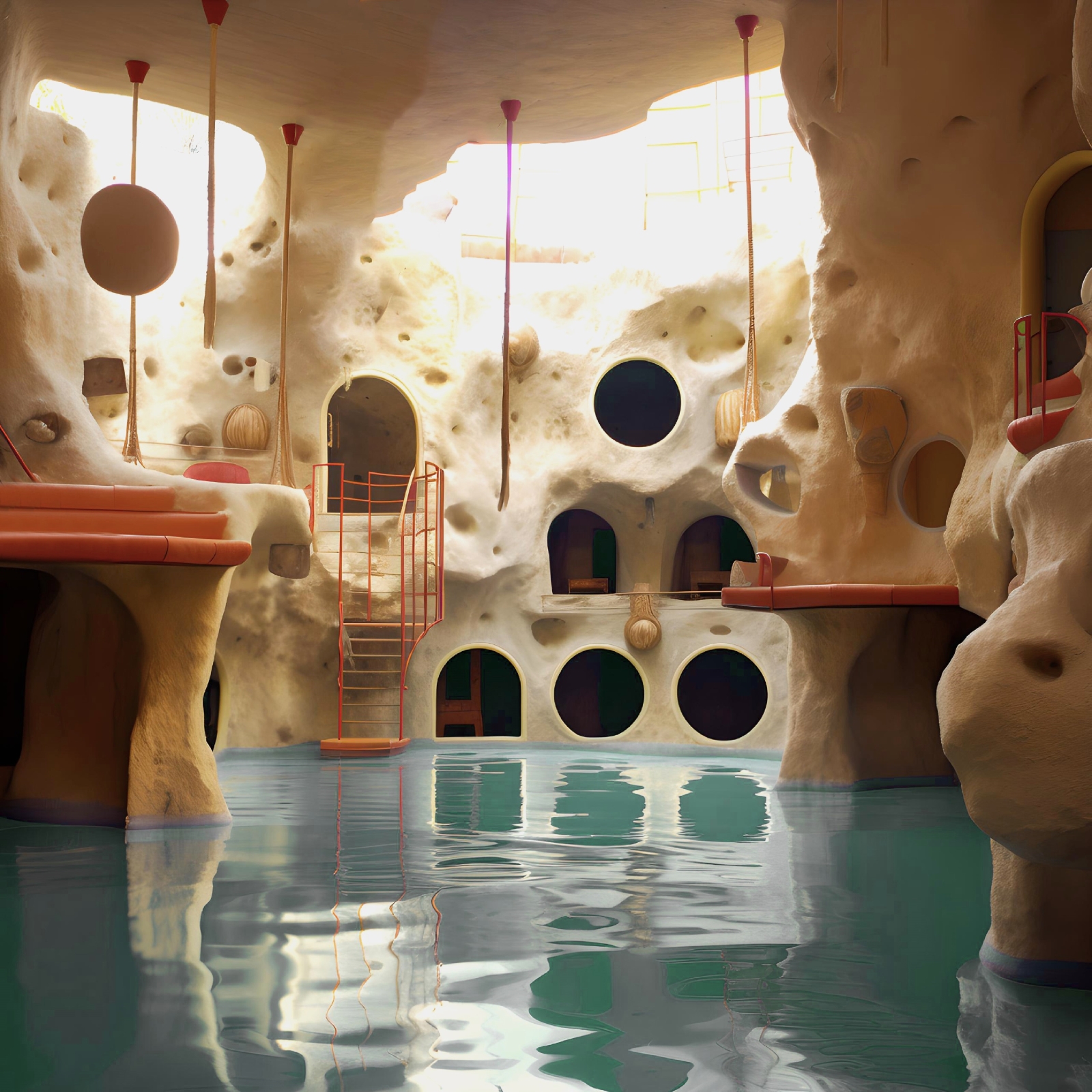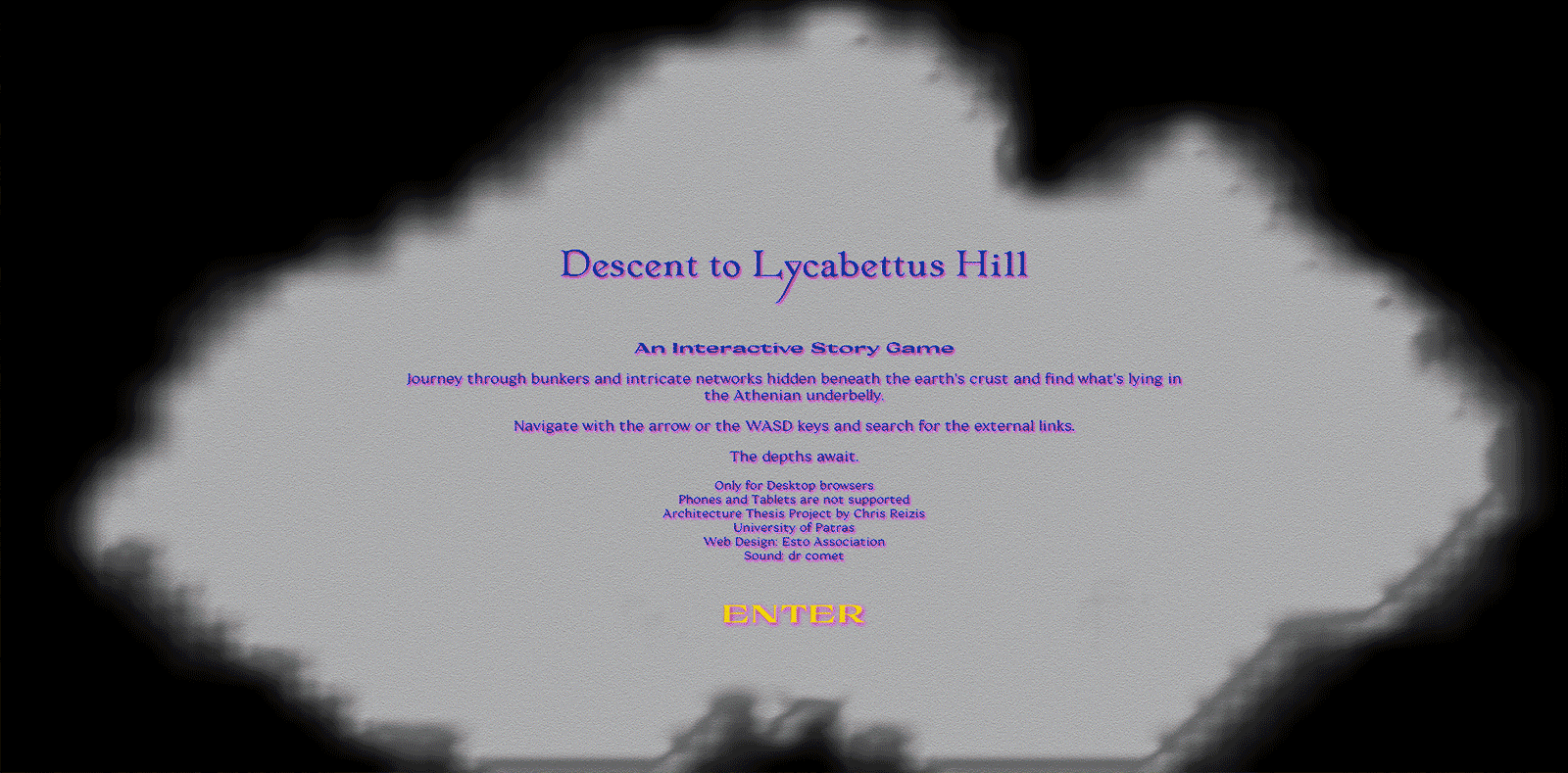Narratives of collapse and urban legends are the theoretical starting points for the synthesis of a recreation center on the hill of Lycabettus. Chrysostomos Reizis’ thesis entitled “Descent to Lycabettus Hill: A Recreational Space Conceived Through Digital Speleology” is a visually intricate blend of urban/URL speleology.
The bunker, once primarily a military structure, has seamlessly integrated into the domestic sphere, persisting as a symbol of readiness amidst ecological and social anxieties.
In an era marked by fantasies of the End, the contemporary bunker epitomizes perpetual readiness against narratives of collapse.
At the same time, different apocalyptic belief systems, along with the more recent emergence of QAnon, have crafted elaborate conspiracy theories and speculative narratives regarding Deep Underground Military Bases, also known as D.U.M.B.S.
Imagined as vast interconnected networks deep below the earth’s surface, these spaces are caught between reality and fiction, embodying the murky psychological spaces of online discourse.
In Greece, historical contexts have shaped the proliferation of bunkers. During the Metaxas dictatorship, anti-bombing shelters became integral to civilian protection, with Athens alone adding over 400 public shelters. Similarly, the German Occupation spurred the construction of bunkers, particularly in coastal regions like Glifada and Rafina, characterized by distinct architectural features.
The refuge on Lycabettus Hill, intertwined with urban legends, served as a defense center during the 1940 battle. Its layout, including two large halls, corridors, ventilation and communication systems, reflects meticulous planning. Over time, it became enveloped in myth, envisioned as the center of a vast underground tunnel system beneath Athens.
The project to design a recreational center in Lycabettus involves creating an artificial landscape around the existing refuge, reminiscent of a hill within a hill. This endeavor aims to preserve historical significance while enhancing communal spaces, guided by the refuge’s layout.
The design integrates online content, found in the form of photographs, short videos, memes and GIFs pieced together with AI-generated imagery and pictures from the actual site.
This results in a visually intricate blend of urban/URL speleology presented in the form of an interactive story game.
The selected visual references become directly the main scenes and the props of the new recreational facility, which features recreational areas, a theater, a simulated green hill, and an indoor sky.
Facts & Credits
Project title Descent to Lycabettus Hill: A Recreational Space Conceived Through Digital Speleology.
Project type Diploma thesis
Student Chrysostomos Reizis
Supervisor Leonidas Papalampropoulos
Web Design Esto Association
Sound Georgia Kalogeropoulou
Website https://descent-to-lycabettus.github.io/
Date September 2023
University School of Architecture, University of Patras
Text provided by the author
READ ALSO: Αρχαίο λιμάνι Λεχαίου, επαναπροσδιορίζοντας τον τόπο | Διπλωματική εργασία των Αθηνά Σακκή και Αναστασία-Αλεξάνδρα Σκούπα
